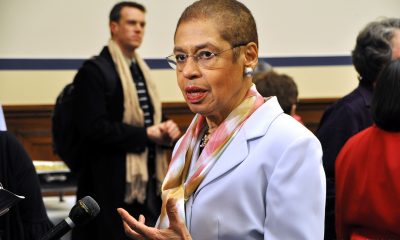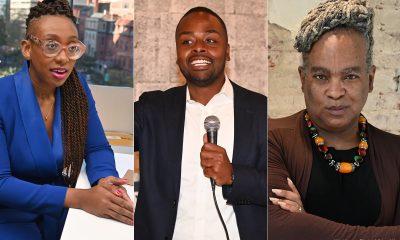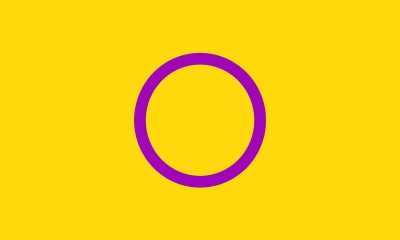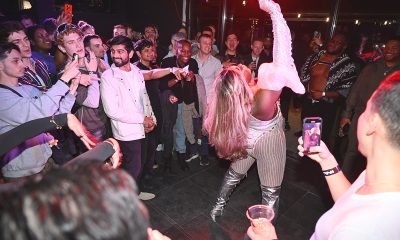Local
Opposing attorneys spar as Wone trial begins
Prosecutors say case ‘not about sexual orientation’
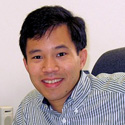
Opposing attorneys in the complex Robert Wone murder conspiracy trial clashed during opening arguments Monday over whether the defendants’ sexual orientation prompted authorities to prosecute them.
Assistant U.S. Attorney Glenn Kirschner said the government would point to the fact that Joseph Price, 39, Victor Zaborsky, 44, and Dylan Ward, 39, were in a three-way relationship as a means of showing that their “strong bond” played a role in their alleged conspiracy to obstruct justice.
Wone, a Washington attorney, was found stabbed to death in a guest room in the men’s Dupont Circle area townhouse in August 2006. The defendants, all of whom are gay, have been indicted on charges of obstruction of justice, conspiracy to obstruct justice, and evidence tampering in connection with the police investigation of the murder. No one has been charged with the murder.
The men face a maximum sentence of 38 years in prison if found guilty on all three charges.
“This case is not about sexual orientation,” Kirschner told D.C. Superior Court Judge Lynn Leibovitz, who is poised to decide the men’s fate after the prosecution and defense attorneys opted to forego a jury trial.
“This case is not about the personal relationship of these three. There is nothing negative that can be inferred due to the sexual orientation or the lifestyle choices of these men,” he said.
But he noted that Price, Zaborsky and Ward “had powerful bonds among them,” which amounted to a “tight knit family” that is protecting its members from the harm that would come to them “if the truth came out.”
Kirschner then spent more than an hour outlining the government’s contention that the men tampered with the crime scene, repeatedly misled police and homicide detectives investigating the murder, and know but refuse to disclose the identity of the person or people who fatally stabbed Wone three times in the chest.
He reiterated the government’s assertion in numerous briefs and a police affidavit that the evidence refutes the defendants’ claim that an intruder killed Wone after entering the house from a rear door while they were asleep in their bedrooms.
Among other things, Kirschner noted that paramedics and crime scene investigators found far less blood on the bed where Wone was found with three “gaping” stab wounds and found no signs of a struggle or defensive wounds. He said this is evidence of crime scene tampering.
Defense attorneys representing the three gay men countered that the evidence doesn’t support any of the government’s allegations, including an assertion that more blood should have been found on the scene. From the moment homicide detectives arrived at the house to investigate the murder, they became “marred and infatuated in a theory based on ignorance,” prompting them to suspect the men were involved in the murder, said Price’s attorney, Bernard Grimm.
“Why is a straight man coming to the house of a gay man,” Grimm quoted a detective as saying while interviewing one of the defendants.
Grimm said the defense would present expert witnesses to prove that one of the three stab wounds that pierced Wone’s heart would have rendered him dead within five seconds or less. Grimm said this, rather than a sinister conspiracy, was the reason there were no signs of a struggle and more blood did not flow from the wounds.
And he said there was “no orchestrating of the crime scene,” contesting the evidence tampering charge.
Ward’s defense attorney, David Schertler, said prosecutors were basing their case on “faulty assumptions, speculation and innuendo.”
Following the opening arguments, Wone’s wife, Katherine Wone, took the stand as the first government witnesses. In response to questions by Kirschner, she told how her husband met Price and recounted the friendship they shared as undergraduate students at the College of William & Mary in Virginia.
She said that her husband, whom Kirschner described as “exclusively straight,” arranged to spend the night at the home of Price, Zaborsky and Ward on the night of the murder because he planned to work late at his nearby office at Radio Free Asia, where he served as general counsel.
The trial, which is expected to last weeks, recessed shortly before 5 p.m. Monday. Katherine Wone was to return and complete her testimony Tuesday.
D.C. attorney Dale Edwin Sanders, who practices criminal law, said the part of the government’s case that appears the strongest is its assertion that no evidence exists to show an intruder entered the house to kill Wone. He noted that in cases based on circumstantial evidence, sometimes “missing” evidence becomes the key to the case.
In his opening arguments, Kirschner noted that an intruder would have had to scale a seven-foot security fence surrounding the back yard of the house, even if the rear door to the house was unlocked, as the defense says was likely.
He pointed to police findings that there were no footprints or other signs that someone jumped into the patio and grounds inside the fence. He said police findings also showed that dust, pollen and other debris on the top surface of the fence was “completely” undisturbed, indicating that an intruder did not go over the fence.
Additionally, Kirschner asked if an intruder entered the premises to burglarize the house, as suggested by the defense, why didn’t he take a host of valuable items in clear view, including a laptop computer, which were in his path en route to the guest room where Wone slept.
Schertler, however, disputed the arguments. Among other things, he said that an intruder could have bypassed the fence by using a nearby trash container to climb onto a shed next to the house where Price, Zaborsky and Ward lived, and jumped over the fence. He also noted that the prosecution could not determine the intruder’s “state of mind” as to why he did not steal anything in the house.
District of Columbia
Reasons to be optimistic about 2026
Local thought leaders offer hope for the New Year
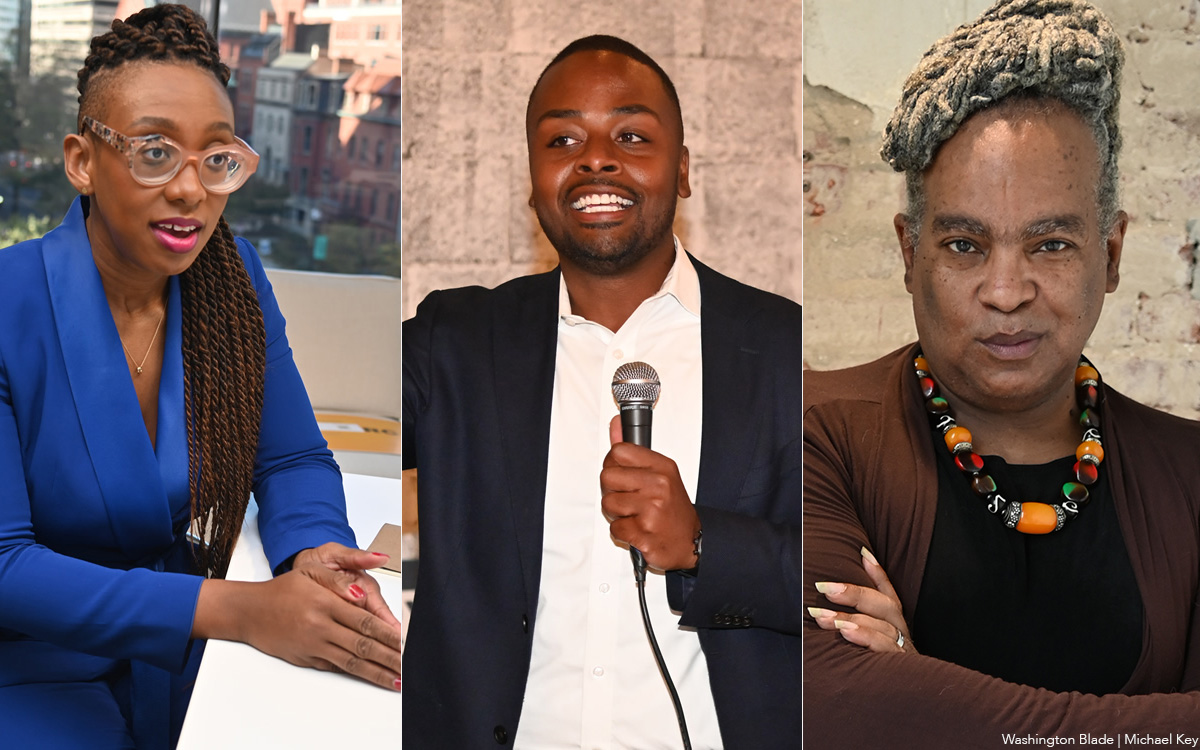
It was a year like no other. It began with Donald Trump’s inauguration in January 2025 and included a takeover of D.C. police, ICE raids, challenges for the local economy, and other events that have many queer Washingtonians ready for 2026.
As we prepare to welcome the New Year, the Blade asked a range of local thought leaders about what makes them optimistic for 2026. Here are their responses.
June Crenshaw
Deputy Director, Capital Pride Alliance
What gives me optimism for 2026 is the way our LGBTQIA2S+ community supports one another – across identities, neighborhoods, and movements – and because we continue to build our collective powers; we demand and create safer, more inclusive spaces.
Zachary Parker
Ward 5 DC. Council member
I’m optimistic about the upcoming elections and the District’s continued fight for local autonomy. One thing I know for sure is that Washingtonians are tough and persistent, and we’re ready to face any challenge as we keep fighting for D.C. statehood.
Sister Jeannine Gramick
Co-founder of LGBTQ supportive New Ways Ministry
As a nun who thinks politically about the Catholic Church, I’m extremely optimistic that Pope Leo XIV will continue to welcome LGBTQ people. At the conclave, most cardinals knew Pope Francis had (then) Cardinal Proost in mind!
Adam Ebbin
Virginia State Senator representing parts of Arlington, Alexandria, and Fairfax Counties
I am excited about 2026 bringing the return of the pro-equality governor to Virginia. I believe that Abigail Spanberger will be a champion for LGBT people and it will also be the year that we can finally pass the necessary legislation to send a constitutional amendment to the voters that would guarantee marriage equality in the Virginia Constitution.
Howard Garrett
President, Capital Stonewall Democrats
In 2026, our community can be optimistic because we’ve proven, again and again, that when we organize, we win: at the ballot box, in the courts, and in our neighborhoods. Even amid challenge, LGBTQ+ Washingtonians and our allies are building stronger coalitions, electing champions, and advancing real protections that make daily life safer and more affirming for everyone.
Paul Kuntzler
D.C. LGBTQ activist since the early 1960s, co-founder of Capital Stonewall Democrats
Last Nov. 4, 11 states held elections and Democrats won almost all of the elections. Next Nov. 3, 2026, Democrats will win control of both the House and Senate …An Economist poll reported that 15 percent to 20 percent of those who voted for Trump no longer support him. The results of the elections of Nov. 3, 2026, will be the beginning of the end of Trump and his racist and criminal regime.
Kelley Robinson
President, Human Rights Campaign
This past year has brought relentless attacks against the LGBTQ+ community, but it has also shown the resiliency of queer folks. While this administration has worked tirelessly to oppress us, we’ve met that oppression with courage. As we step into 2026, my hope is that we carry that energy forward and continue protecting one another, fighting back against injustice, and celebrating queer joy. If 2026 is anything like 2025, we know the challenges will be intense, but our community is more determined than ever to meet hate with resilience, and to turn struggle into strength.
Freddie Lutz
Owner, Freddie’s Beach Bar in Arlington and Rehoboth Beach
I am optimistic that the current president will fulfill his promise to boost the economy. We are all suffering – businesses in D.C. I just read it is 17 to 18 percent down. And I’m hoping the president will boost the economy. I always try to remain optimistic.
Nicholas F. Benton
Owner & Editor, Falls Church News-Press
My optimism stems from my belief in the human capacity and generosity of spirit. Those who are committed to those qualities will find a way.
Richard Rosendall
Former president, D.C. Gay & Lesbian Activists Alliance
MAGA efforts to demonize LGBTQ people are dangerous but will fail overall because understanding and acceptance have grown and endured. The blue wave in November 2026 will show this.
TJ Flavell
Organizer, Go Gay DC
Hope springs eternal. Nurturing your own wellness is vital to the New Year, including enjoying social and cultural activities through such groups as Go Gay DC – Metro DC’s LGBTQ Community. Also, 2026 ushers in a new tax deduction for charitable giving. Check the IRS website for details. You can make a positive impact in the New Year by supporting good charitable causes like the D.C. LGBTQ+ Community Center, a safe, inclusive, and affirming space where all members of our community can thrive.
Rayceen Pendarvis
Leader of Team Rayceen D.C. LGBTQ support organization
I have experienced many trials and tribulations in my lifetime, throughout which my spirit has enabled me to find peace despite the turbulence around me. Being optimistic allows me to be a beacon of light for those who may be lost in the darkness.
Zar
Team Rayceen organizer
My reason for optimism is this: death. Life is a cycle of time, change, and destruction. Everything is impermanent; the time any person rules is finite and eventually all empires end.
DJ Honey
Team Rayceen supporter
Despite the noise, I see 2026 as a year where queer people continue choosing community over isolation. Even when challenged, our culture keeps evolving. We are more visible, more creative and intentional about building spaces that protect each other and center joy without asking permission.
Nick Tsusaki
Owner, Spark Social House, D.C. LGBTQ café and bar
I’m optimistic for 2026 because it feels like the tide is turning and we’re coming together as a community.
District of Columbia
Rush reopens after renewing suspended liquor license
Principal owner says he’s working to resolve payroll issue for unpaid staff
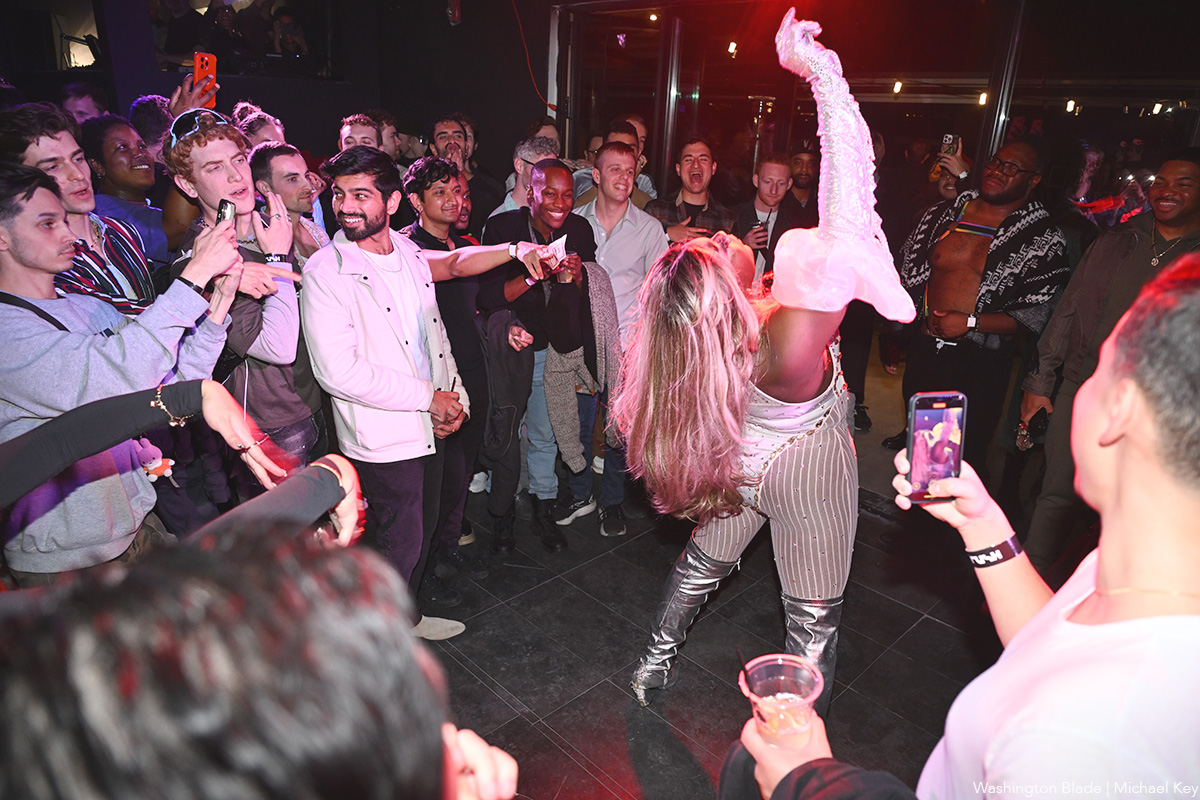
The D.C. LGBTQ bar and nightclub Rush reopened and was serving drinks to customers on Saturday night, Dec. 20, under a renewed liquor license three days after the city’s Alcoholic Beverage and Cannabis Board suspended the license on grounds that Rush failed to pay a required annual licensing fee.
In its Dec. 17 order suspending the Rush liquor license the ABC Board stated the “payment check was returned unpaid and alternative payment was not submitted.”
Jackson Mosley, Rush’s principal owner, says in a statement posted on the Rush website that the check did not “bounce,” as rumors circulating in the community have claimed. He said a decision was made to put a “hold” on the check so that Rush could change its initial decision to submit a payment for the license for three years and instead to pay a lower price for a one-year payment.
“Various fees and fines were added to the amount, making it necessary to replace the stop-payment check in person – a deadline that was Wednesday despite my attempts to delay it due to these circumstances,” Mosley states in his message.
He told the Washington Blade in an interview inside Rush on Saturday night, Dec. 20, that the Alcoholic Beverage and Cannabis Administration (ABCA) quickly processed Rush’s liquor license renewal following his visit to submit a new check.
He also reiterated in the interview some of the details he explained in his Rush website statement regarding a payroll problem that resulted in his employees not being paid for their first month’s work at Rush, which was scheduled to take place Dec. 15 through a direct deposit into the employees’ bank accounts.
Several employees set up a GoFundMe appeal in which they stated they “showed up, worked hard, and were left unpaid after contributing their time, labor, and professional skills to Rush, D.C.’s newest LGBTQ bar.”
In his website statement Mosley says employees were not paid because of a “tax related mismatch between federal and District records,” which, among other things, involves the IRS. He said the IRS was using his former company legal name Green Zebra LLC while D.C. officials are using his current company legal name Rainbow Zebra LLC.
“This discrepancy triggered a compliance hold within our payroll system,” he says in his statement. “The moment I became aware of the issue, I immediately engaged our payroll provider and began working to resolve it,” he wrote.
He added that while he is the founder and CEO of Rush’s parent and management company called Momentux, company investors play a role in making various decisions, and that the investors rather than he control a “syndicated treasury account” that funds and operates the payroll system.
He told the Blade that he and others involved with the company were working hard to resolve the payroll problem as soon as possible.
“Every employee – past or present – will receive the pay they are owed in accordance with D.C. and federal law,” he says in his statement. “That remains my priority.”
In a follow-up text message to the Blade on Sunday night, Dec. 21, Mosley said, “All performers, DJs, etc. have been fully paid.”
He said Rush had 21 employees but “2 were let go for gross misconduct, 2 were let go for misconduct, 1 for moral turpitude, 2 for performance concerns.” He added that all of the remaining 14 employees have returned to work at the time of the reopening on Dec. 20.
Rush held its grand opening on Dec. 5 on the second and third floors of a building at 2001 14th Street, N.W., with its entrance around the corner on U Street next to the existing LGBTQ dance club Bunker.
With at least a half dozen or more LGBTQ bars located within walking distance of Rush in the U Street entertainment corridor, Mosley told the Blade he believes some of the competing LGBTQ bars, which he says believe Rush will take away their customers, may be responsible along with former employees of “rumors” disparaging him and Rush.
Rehoboth Beach
Rehoboth’s Blue Moon is for sale but owners aim to keep it in gay-friendly hands
$4.5 million listing includes real estate; business sold separately
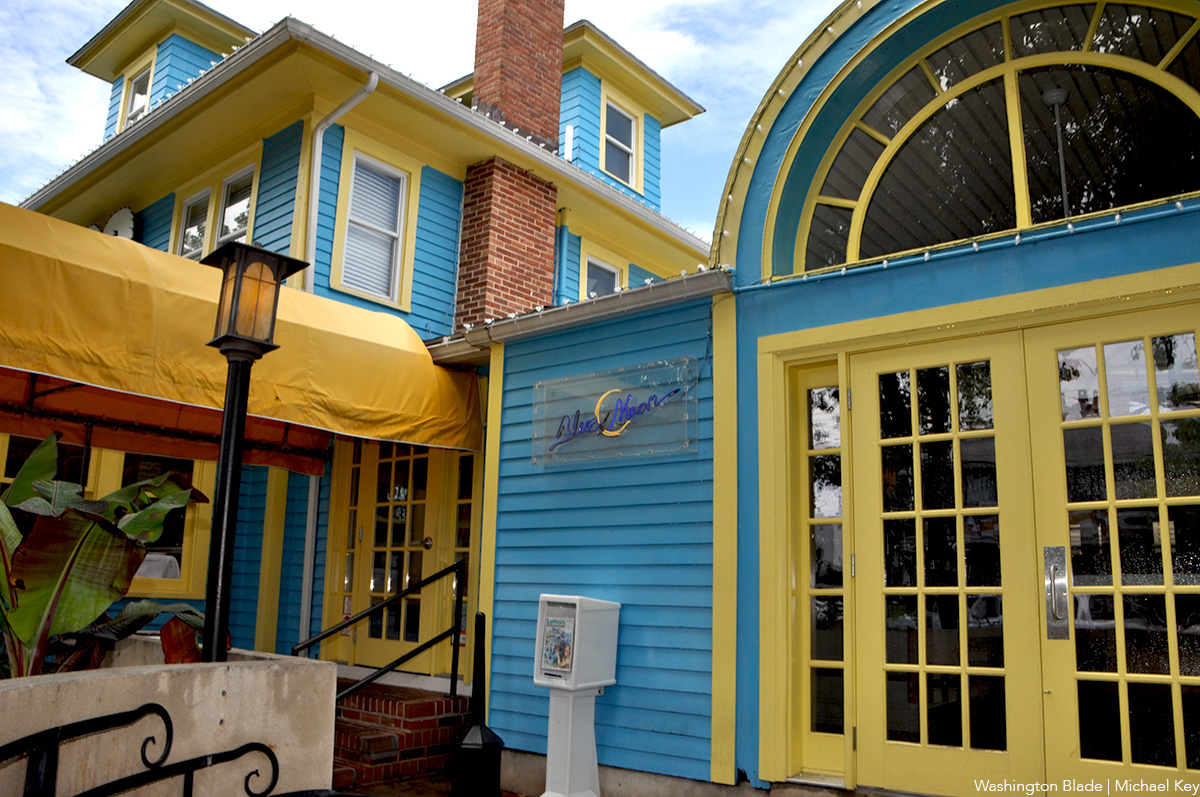
Gay gasps could be heard around the DMV earlier this week when a real estate listing for Rehoboth Beach’s iconic Blue Moon bar and restaurant hit social media.
Take a breath. The Moon is for sale but the longtime owners are not in a hurry and are committed to preserving its legacy as a gay-friendly space.
“We had no idea the interest this would create,” Tim Ragan, one of the owners, told the Blade this week. “I guess I was a little naive about that.”
Ragan explained that he and longtime partner Randy Haney are separating the real estate from the business. The two buildings associated with the sale are listed by Carrie Lingo at 35 Baltimore Ave., and include an apartment, the front restaurant (6,600 square feet with three floors and a basement), and a secondary building (roughly 1,800 square feet on two floors). They are listed for $4.5 million.
The bar and restaurant business is being sold separately; the price has not been publicly disclosed.
But Ragan, who has owned the Moon for 20 years, told the Blade nothing is imminent and that the Moon remains open through the holidays and is scheduled to reopen for the 2026 season on Feb. 10. He has already scheduled some 2026 entertainment.
“It’s time to look for the next people who can continue the history of the Moon and cultivate the next chapter,” Ragan said, noting that he turns 70 next year. “We’re not panicked; we separated the building from the business. Some buyers can’t afford both.”
He said there have been many inquiries and they’ve considered some offers but nothing is firm yet.
Given the Moon’s pioneering role in queering Rehoboth Beach since its debut 44 years ago in 1981, many LGBTQ visitors and residents are concerned about losing such an iconic queer space to redevelopment or chain ownership.
“That’s the No. 1 consideration,” Ragan said, “preserving a commitment to the gay community and honoring its history. The legacy needs to continue.” He added that they are not inclined to sell to one of the local restaurant chains.
You can view the real estate listing here.



